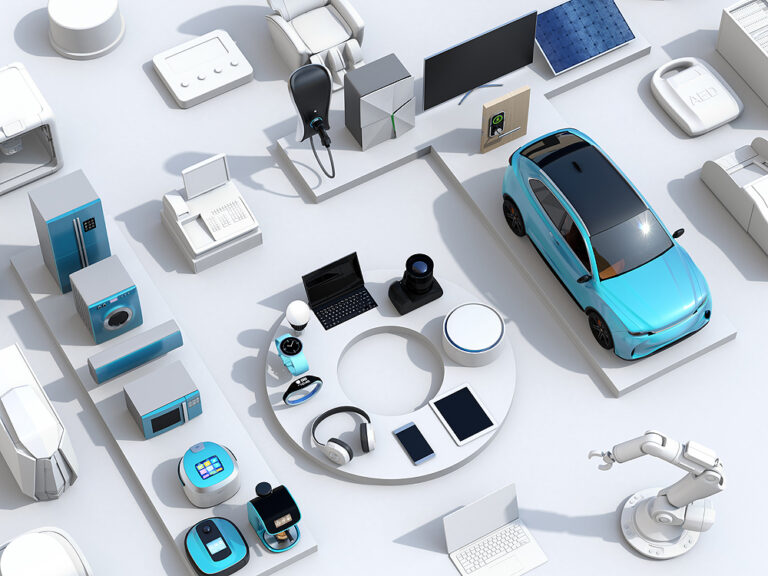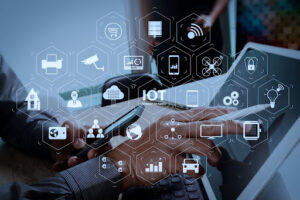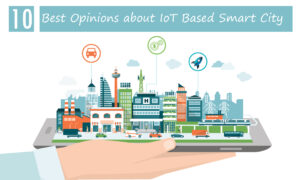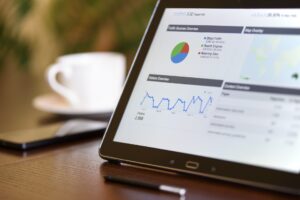A few years ago, many experts expressed their belief that by now, most of the homes would be “smart homes” consisting of smart devices as a part of an integrated network of the internet-of-things (IoT).
But due to several reasons, this idea couldn’t be as successful as expected. This has sparked yet another debate among experts. Some claim that IoT is dead while others are persistent that IoT has merely changed forms from what we originally expected. In this article, we’re going to find exactly where the truth lies.
Internet of Things – Today
IoT, in simple words, is a network of connected devices. In the context of smart homes, this means that all your appliances and devices are interconnected and have smart features that allow them to be controlled remotely, updated automatically and create backups on the cloud. But the idea of smart homes didn’t really turn out to be consumers’ favorite.
Yes, smart TVs and smart thermostats were a success but other IoT devices like smart toasters and smart washing machines were nowhere to be found in homes.
IoT applications, however, have turned out to be very useful for various industries as they capitalized on RFID chips to track batches of products or utilized sensors to determine when machines are down.
Why IoT failed to meet the hype?
Exaggerated Journalism
One of the problems with journalism (of any type) is that everything falls under one of the two categories: too good or too bad. There’s nothing in between and this is what makes their content potentially capable of going viral.
In the case of tech journalism, journalists are constantly under pressure to come up with/foresee the “next big thing” that will change people’s lives or change the world for better. It’s important to know that these are mere speculations and predictions which are often very different from the actual outcomes.
“IoT was a topic of demand and tech writers bombarded the internet with content about how it will change the world while simultaneously increasing the expectations of the public.”
Perceived Values
One of the most important questions rational consumers ask when making a buying decision is, “Is it worth its price?”. Usually, smart devices are much more expensive than their traditional counterparts.
For example, upgrading from a traditional refrigerator to a smart one may cost several hundred or even a few thousand dollars depending on the models. But how much value is the “smart” component really adding? Yes, a few additional features, such as a built-in grocery list, may marginally improve the quality of life but will it revolutionize the way you live (as the hype suggested)? The answer is no and that is why consumers haven’t felt the need to invest in the technology.
Consumer Requirements
Some IoT devices may be too demanding of the customers who purchase them. For example, getting users to upgrade the device’s software can be hard and those updates are necessary for devices to maintain reliable, consistent operations.
It can also be hard for older consumers or those who aren’t tech-savvy to get hold of 10 different user interfaces for 10 different smart appliances they bring in their homes.
A single, universal provider of IoT devices may potentially eliminate this problem by offering a comprehensive interface for all connected devices and streamlining things but a leader is yet to emerge.
Security and Privacy
“Cybersecurity and data privacy has become one of the major concerns of the consumers who avail services online or buy smart products.”
All the negative publicity, cyber-breach news, data leaks, etc. have worked against IoT devices that are not very secure themselves.
For hackers, all it takes to compromise an entire network is to take one point of entry and every IoT device serves as another point of entry. This is even easier if the devices are poorly developed or designed. For this reason, companies look to acquire the services of an IoT testing company that can help ensure fool-proof security and proper functioning of IoT devices.
As far as data leaks are concerned, many consumers are aware of the tracking potential in smart devices. For example, a security camera may well help you monitor all the activities for security purposes, but it may also store footages in the cloud that can make it a target for criminals. Also, every company that offers any type of smart device could hypothetically access all your data for advertisement.
Development Opportunities
The harsh reality is that IoT devices weren’t able to make the impact for which there was so much hype. The majority of the consumers refused to shift to smart devices which means that there is close to no incentive for companies to allocate their time or money to develop these devices. Also, many of the most successful smart devices are frequently sold at a loss, so it’s hard to enter an already competitive market.
Developmental Standards
IoT also struggled to keep up with development standards. Technically, in the case of IoT, there were no development standards or defined protocols, to begin with, since developers could barely agree on the definition of “IoT” is. This makes it tremendously hard to develop and design devices that can work with each other and pushes more consumers away from the conventional picture of “smart home”.
The Future for Industry
As opposed to the consumer market, IoT has been somewhat successful in the business market. Industrial applications are adopting IoT at an increasing rate and businesses that require internal tracking find sensing equipment and RFID chips much easier and cheaper to manufacture than big, lumbering consumer electronics.
IoT’s future is expected to continue along these lines, with devices in the network being inconspicuous, small, and lending only a fraction of the overall system’s total value.
The Future for Consumers
Recently, smart “home” devices and speakers are successfully making their way into the market. Their main selling point is that they allow users to control a large number of individual devices – even if they have a handful of features of their own.
We’re also expected to see more devices that will provide big data and analytic insights to consumers and help them learn more about their habits rather than providing unnecessary features that don’t add value.
This will require manufacturers to look for an IoT testing company to test the robustness of algorithms and ensure accurate outcomes.
— Ray Parker a Senior Marketing Consultant at Kualitatem loves to write tech-related news and articles. Apart from his techie appearance, he enjoys soccer, reading mysteries, and spending long hours working over at the New York office.
Also, Read How to Handle Major IoT Security Issues










